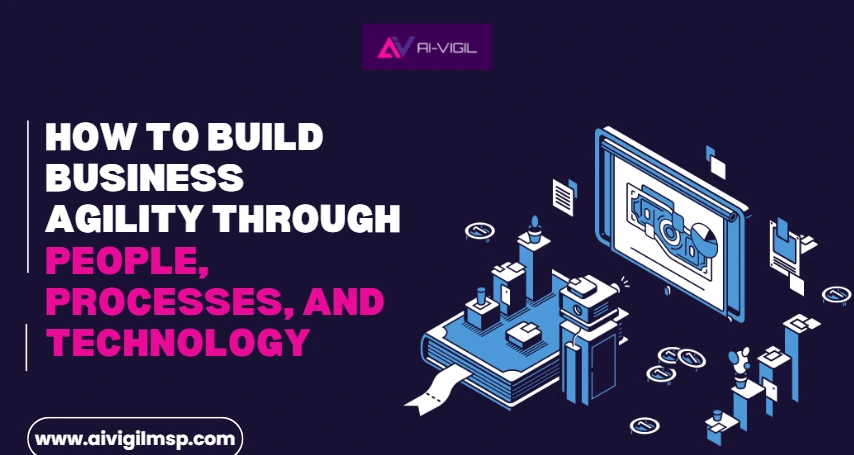Running a small or mid-sized business (SMB) today isn’t for the faint-hearted. The landscape shifts rapidly, whether it’s global events, market changes, or technological disruption. If you’re an SMB owner or manager, you know how crucial it is to stay agile.
In this guide, we’ll break down what business agility means for SMBs, why it’s vital for your success, and practical steps you can take to become more flexible, resilient, and competitive in 2025 and beyond.
What is Business Agility?
Business agility refers to a company’s ability to adapt quickly to market shifts, customer needs, and unexpected challenges. It’s about having the right systems, processes, and mindset to pivot when necessary without losing momentum.
In a world where “wait and see” can cost you dearly, agile businesses have a clear advantage. They’re ready to tweak strategies, launch new offerings, and modify operations based on real-time feedback and evolving circumstances.
In short: agility is your secret weapon to thrive when others stumble.
Why Business Agility Matters for SMBs
Bigger corporations may have more resources, but SMBs have something even more powerful: speed and adaptability. Here’s why cultivating agility can set you apart:
1. Faster Response to Change
Change is inevitable. Whether it’s a new competitor, supply chain disruptions, or shifts in customer behavior, businesses must adapt. Agile SMBs can respond swiftly, avoiding prolonged downtime or lost revenue.
2. Meeting Evolving Customer Expectations
Customers today expect fast service, personalized experiences, and digital convenience. Agile businesses can keep pace with these demands, delivering better customer satisfaction and loyalty.
3. Reducing Risk of Downtime
Frequent downtime hurts not just your profits, but also your brand reputation. Business agility ensures you have backup plans and flexible operations that minimize disruptions.
4. Protecting Your Bottom Line
Unexpected challenges often come with unexpected expenses. An agile SMB can manage financial risks better, plug potential leaks, and protect profitability during tough times.
Key Elements of an Agile SMB
To truly become agile, you need to work on three major pillars:
- Flexible People
- Empower your team to make decisions.
- Encourage continuous learning.
- Promote a culture of innovation.
- Adaptive Processes
- Implement processes that are easy to tweak.
- Regularly review workflows for inefficiencies.
- Use agile project management techniques (like Scrum or Kanban).
- Scalable Technology
- Invest in cloud-based solutions.
- Use collaboration tools that support remote and hybrid teams.
- Prioritize cybersecurity to protect digital operations.
How to Make Your SMB More Agile
Ready to embrace agility? Here’s a roadmap you can follow:
Step 1: Conduct an Agility Audit
Evaluate how your business currently responds to change. Where are the bottlenecks? Which areas feel “stuck”?
Step 2: Build a Feedback-Driven Culture
Encourage feedback from employees, customers, and partners. Use these insights to make quick, informed adjustments.
Step 3: Implement Agile Technology
Adopt platforms that enable flexibility, such as:
- Cloud storage and backups
- CRM software
- Remote collaboration tools (e.g., Slack, Teams)
Step 4: Train Your Team
Offer agility training workshops. Teach your team to think iteratively, prioritize flexibility, and embrace change as an opportunity.
Step 5: Partner with Experts
Sometimes, you need an extra hand. Partnering with a trusted Managed Service Provider (MSP) like AIVIGIL can help you implement agile IT solutions without stretching your internal resources thin.
Real-World Example: SMB Agility in Action
Take the example of a local retail business that shifted to e-commerce within weeks during the pandemic. By adopting agile marketing strategies, leveraging cloud inventory tools, and training their team for digital customer service, they not only survived but expanded their customer base nationwide.
That’s the power of agility — it turns obstacles into opportunities.
Common Barriers to Business Agility (and How to Overcome Them)
| Barrier | Solution |
| Resistance to Change | Foster a growth mindset across the organization. |
| Legacy Systems | Gradually transition to modern, scalable tools. |
| Siloed Communication | Implement transparent and regular communication channels. |
| Limited Resources | Prioritize high-impact agile initiatives and seek partnerships. |
Final Thoughts: Agility is the New Competitive Advantage
In today’s world, it’s not the biggest businesses that win — it’s the most adaptable. Investing in business agility today means you’re better prepared for whatever tomorrow brings.
If you’re looking for a partner to help you strengthen your agility while safeguarding your business, AIVIGIL offers affordable, subscription-based IT services tailored for SMBs like yours.
✨ Book a Demo today and take the first step towards a more agile future
Related Resources
- [How to Build Business Agility Through People, Processes, and Technology]
- [5 Common Mistakes to Avoid When Building Organizational Agility]
- [Building Resilient Teams in a Remote Work Era]
Powered by AIVIGIL — Your Partner in Growth and Protection.





